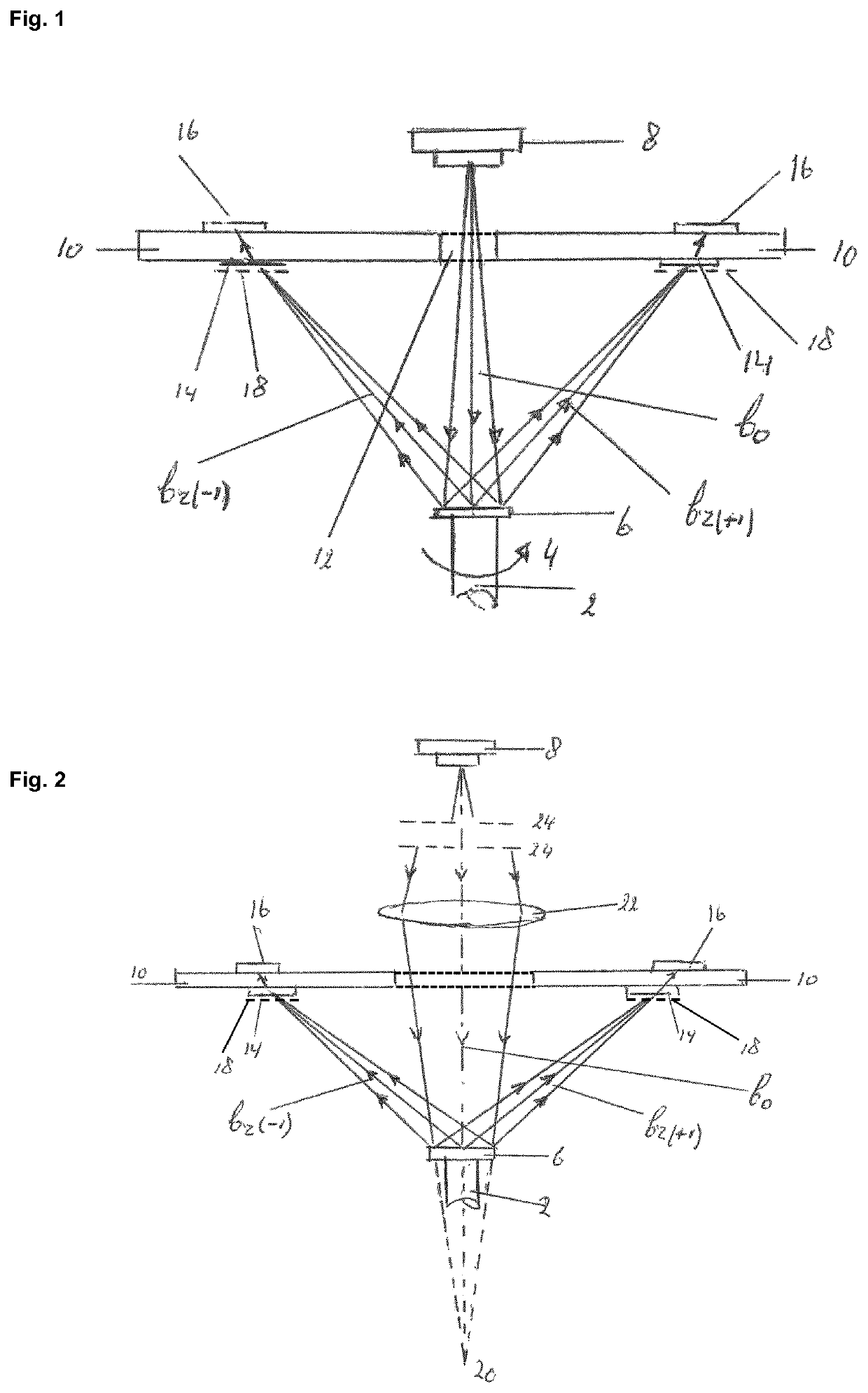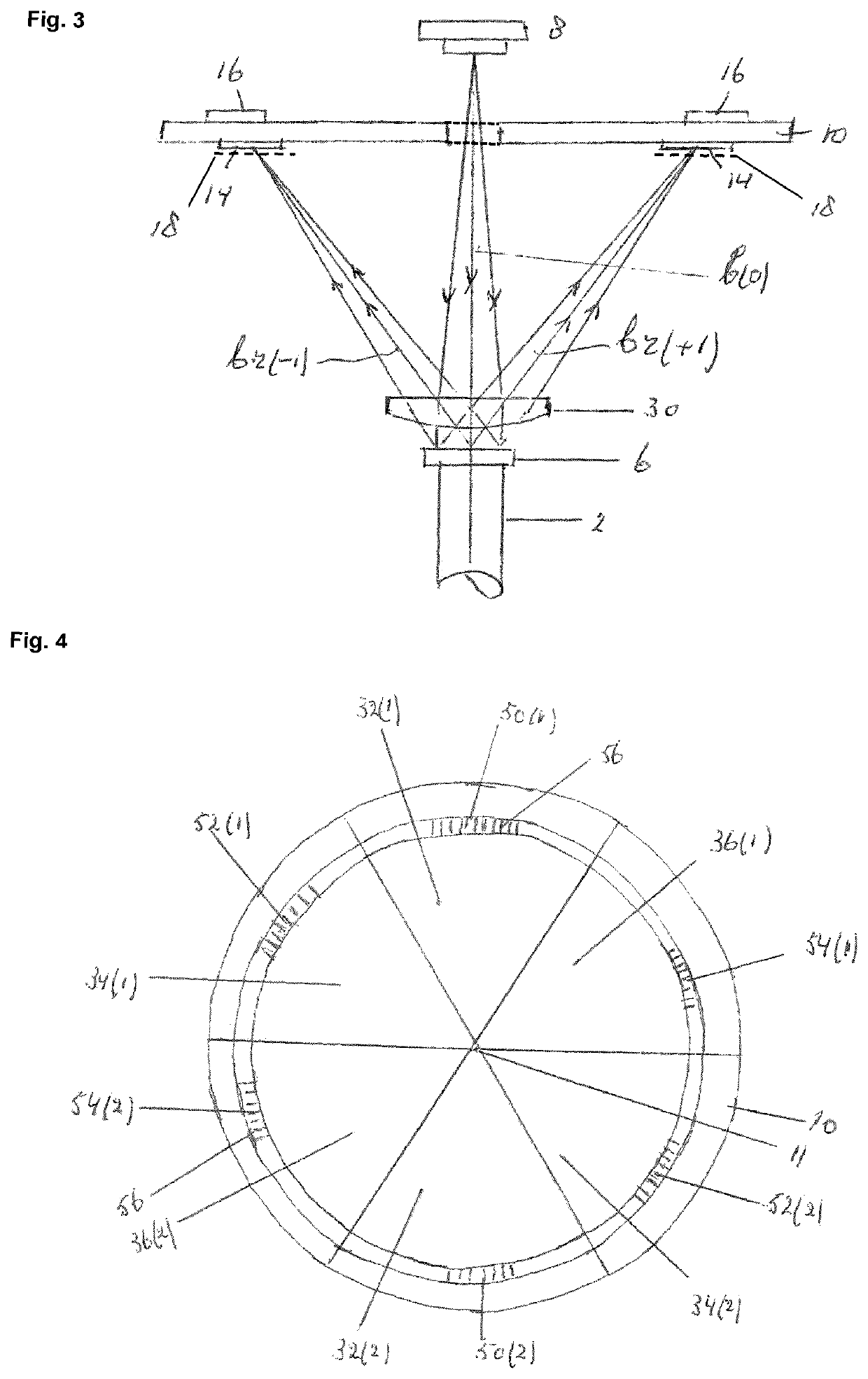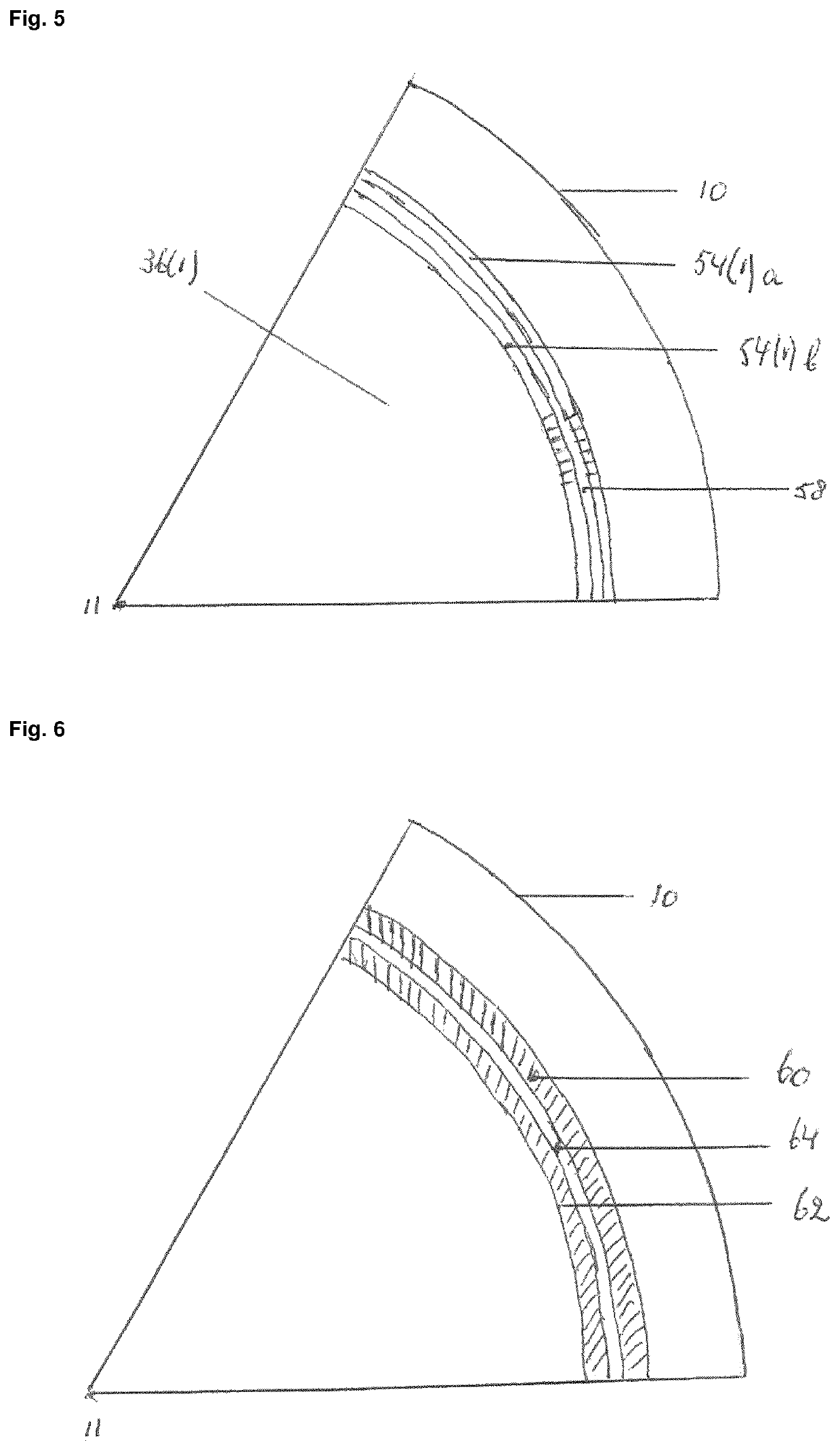Optical rotation angle measuring system
a technology of rotation angle and measuring system, which is applied in the field of optical systems, can solve the problems of 67 microradians, inability to avoid the order of a few micrometers, and inability to meet the measurement resolution now required, and achieves the effect of reducing the number of micrometers, and increasing the measurement rang
- Summary
- Abstract
- Description
- Claims
- Application Information
AI Technical Summary
Benefits of technology
Problems solved by technology
Method used
Image
Examples
Embodiment Construction
[0042]FIG. 1 shows the principle diagram of the rotation angle measurement system according to the drawings, which is, for example suitable for measuring the angular position of a galvanometer scanner. The rotation shaft of this scanner is denoted by reference number (2). The mirror (not shown in the Figure) of the scanner is mounted on this shaft, which rotation movement is indicated by arrow (4), but should not be understood as limiting the invention to a single direction of rotation. The rotation shaft can rotate in either direction. On one end face of the shaft and perpendicular to the shaft a small and reflective diffraction element (RDE) (6), in particular a hologram (31) is mounted. The diffraction element (6) is illuminated by a spherical radiation beam bo emitted by a monochromatic radiation source, preferably a diode laser (8), which is arranged in line with the rotation axis of shaft (2). The diffraction element splits incident beam bo in sub-beams of different diffractio...
PUM
 Login to View More
Login to View More Abstract
Description
Claims
Application Information
 Login to View More
Login to View More - R&D
- Intellectual Property
- Life Sciences
- Materials
- Tech Scout
- Unparalleled Data Quality
- Higher Quality Content
- 60% Fewer Hallucinations
Browse by: Latest US Patents, China's latest patents, Technical Efficacy Thesaurus, Application Domain, Technology Topic, Popular Technical Reports.
© 2025 PatSnap. All rights reserved.Legal|Privacy policy|Modern Slavery Act Transparency Statement|Sitemap|About US| Contact US: help@patsnap.com



